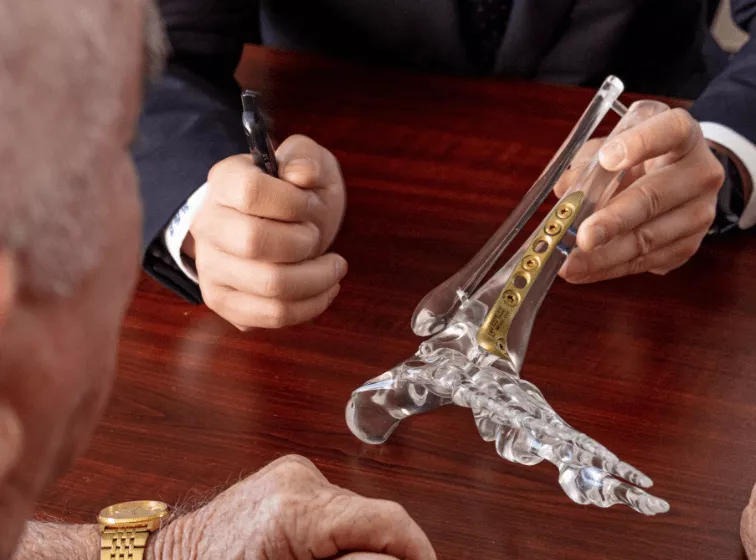Ankle Instability
What is Ankle Instability?
Ankle instability is a chronic condition that can affect both men and women. This occurs when the ankle repeatedly gives way during sporting or daily activities and may lead to constant pain, swelling and damage to the ankle joint and the surrounding tendons. Patients often feel that their ankle is weak and can not be trusted due to the instability.
What is the most common cause of Ankle Instability?
Ankle sprains are one of the most common musculoskeletal injuries and account for up to 40% of sporting injuries. Repetitive injury to the ankle ligaments results in stretching and scaring that can lead to ankle instability. 5% of acute ankle sprains develop chronic recurrent ankle instability. This is often a result of repeated ankle sprains and high level of activity or a single severe injury.

Book an Appointment Today!

What are other causes Ankle Instability?
Some conditions may predispose a patient to ankle instability such as ligamentous laxity (Loose Joints), cavus foot (High arched foot) and muscle imbalances in the foot and ankle.
What are the symptoms of Ankle Instability?
Some conditions may predispose a patient to ankle instability such as ligamentous laxity (Loose Joints), cavus foot (High arched foot) and muscle imbalances in the foot and ankle.
- Pain in the ankle joint with weight bearing
- Swelling and tenderness of the ankle
- Discomfort and weakness around the ankle
- Catching or popping sensation following a sprain
- Feeling of instability or “giving way” while walking on uneven surfaces or during a sporting activity
How do you diagnose Ankle Instability?
Dr. Chow will take a thorough medical history to delineate the nature of the pain, evaluate the degree of functional impairment and assess any associated conditions that may predispose you to ankle instability.
A physical examination will be undertaken to evaluate the areas of tenderness, cracking or clicking in the ankle joint, the range of motion of the ankle and stability of the ankle.
Imaging is essential to evaluate ankle instability. Weight bearing x-rays are useful in assessing for the alignment of the ankle, to rule out associated fractures and assess of evidence of early arthritis. MRI’s may be ordered to assess if there is any tendon damage or damage to the cartilage within the ankle joint.
Ankle Instability Treatments
View treatments for Ankle Instability that our Doctors recommend.
